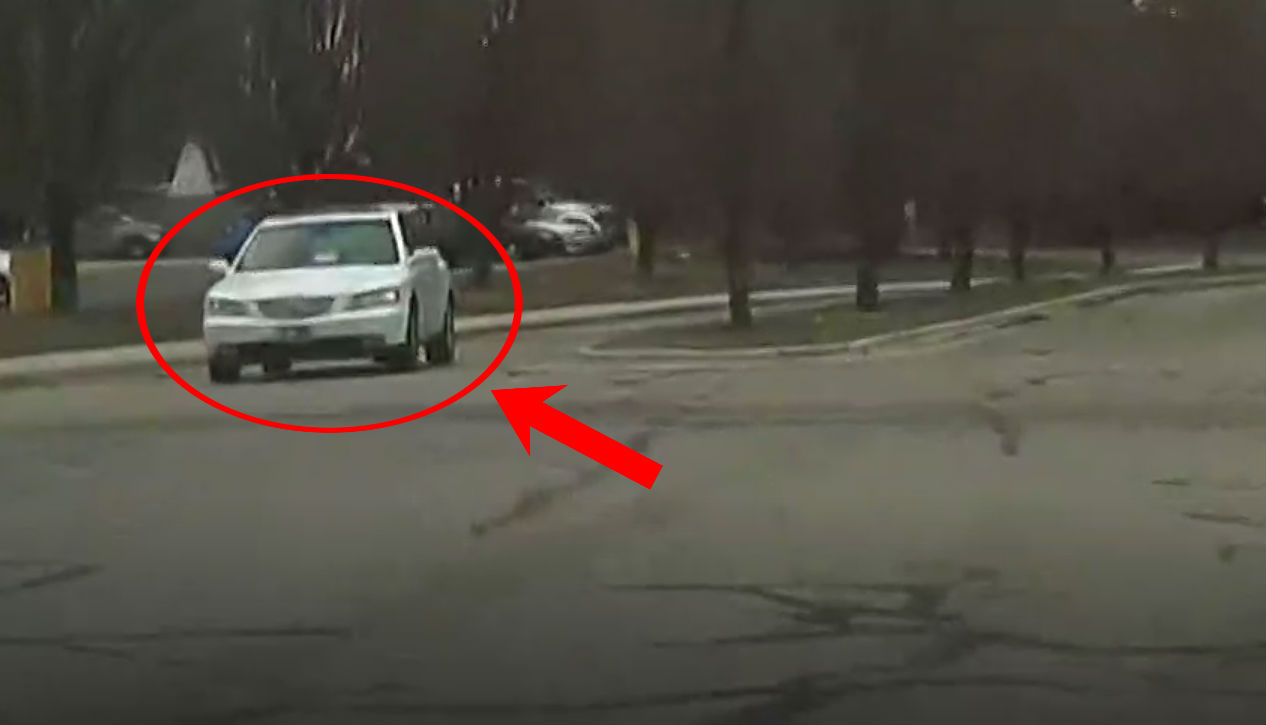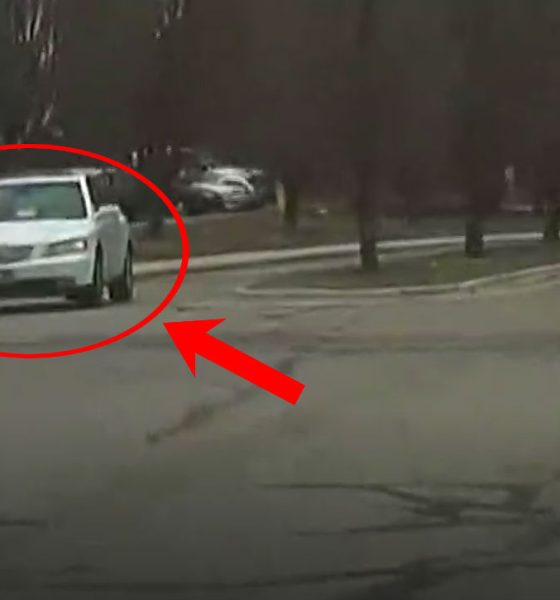

News
Tesla’s built-in dashcam helps identify suspect in road rage incident
Tesla’s built-in dashcam recently helped the case of an electric car owner who was assaulted following a road rage incident at Meridian, Idaho earlier this week. The incident, which started from a simple misunderstanding on the road, resulted in the electric car owner receiving multiple blows to the head and the suspect being booked on a misdemeanor battery charge.
Len Anderson was driving home on his Tesla last Tuesday when he passed a white Hyundai sedan that was taking a left turn off E. Presidential Drive in Meridian. While the Hyundai’s driver used his blinkers to indicate that he was turning left, Anderson figured that he had right of way. As such, he opted to accelerate. This decision, as well as the speed of his car due to its instant torque, did not sit well with the Hyundai’s driver.
In a statement to local media outlet Idaho News, Anderson stated that the Hyundai driver eventually followed him home. At one point, the driver of the white sedan rolled down his window and reportedly yelled at the electric car owner.
“This guy thinks (he’s) cool zipping down the road cutting off people with his Tesla. How dare you drive like that when we have a baby in our car!” the driver said, according to Anderson.
Things only escalated from there. Anderson noted that as he was heading to his mailbox to pick up his mail, the Hyundai’s driver got out of his car and started taking footage of his house and his Tesla. The white sedan’s driver then reportedly closed in, resulting in Anderson yelling at the man to step back. With the driver just inches from his face, Anderson pushed the man away, resulting in the driver’s phone getting knocked out of his hand.
It did not take long before Anderson was knocked to the ground by a punch from the Hyundai’s driver. The Tesla owner noted that the man hit him around 20 times in the head as he lay in a fetal position. Fortunately, Anderson was able to get a photo of the man before he was assaulted, which was later shared online by the Meridian Police Department. The suspect, who was identified as 36-year-old Walter Gage Anderson turned himself in to his probation and parole officer after. Footage from the electric car’s built-in dashcam provided further evidence in the incident.
Reviewing the footage from the built-in dashcam of Anderson’s Tesla, a representative of Meridian PD noted that the electric car owner did not violate traffic rules when he crossed the intersection.
“He was following the correct traffic procedures. I think he may have sped up a little bit at the intersection, but he definitely had the right of way. And it’s really not even about the right of way rule. It really is about common courtesy. You don’t know who you’re dealing with in that other vehicle. No reason to try to get into a physical confrontation with anybody,” the Meridian PD representative said in a statement to KTVB-TV.
Tesla’s built-in dashcam feature was rolled out by the electric car maker to aid drivers in situations similar to those faced by Anderson. By providing footage of what transpired on the road, Tesla owners would be able to back up their side of the story in case they find themselves in an untoward situation. Such an event happened last October, when a Tesla Model 3 was involved in a nighttime accident with a Honda Accord that did not have its lights on. When authorities arrived, the Model 3 owner and the driver of the Accord provided different accounts of the incident. Fortunately, video from the electric car’s built-in dashcam quickly proved the Tesla owner’s point.
Watch a news segment featuring Anderson’s footage from his Tesla’s built-in dashcam in the video below.

Elon Musk
Elon Musk and Tesla AI Director share insights after empty driver seat Robotaxi rides
The executives’ unoccupied tests hint at the rapid progress of Tesla’s unsupervised Robotaxi efforts.

Tesla CEO Elon Musk and AI Director Ashok Elluswamy celebrated Christmas Eve by sharing personal experiences with Robotaxi vehicles that had no safety monitor or occupant in the driver’s seat. Musk described the system’s “perfect driving” around Austin, while Elluswamy posted video from the back seat, calling it “an amazing experience.”
The executives’ unoccupied tests hint at the rapid progress of Tesla’s unsupervised Robotaxi efforts.
Elon and Ashok’s firsthand Robotaxi insights
Prior to Musk and the Tesla AI Director’s posts, sightings of unmanned Teslas navigating public roads were widely shared on social media. One such vehicle was spotted in Austin, Texas, which Elon Musk acknowleged by stating that “Testing is underway with no occupants in the car.”
Based on his Christmas Eve post, Musk seemed to have tested an unmanned Tesla himself. “A Tesla with no safety monitor in the car and me sitting in the passenger seat took me all around Austin on Sunday with perfect driving,” Musk wrote in his post.
Elluswamy responded with a 2-minute video showing himself in the rear of an unmanned Tesla. The video featured the vehicle’s empty front seats, as well as its smooth handling through real-world traffic. He captioned his video with the words, “It’s an amazing experience!”
Towards Unsupervised operations
During an xAI Hackathon earlier this month, Elon Musk mentioned that Tesla owed be removing Safety Monitors from its Robotaxis in Austin in just three weeks. “Unsupervised is pretty much solved at this point. So there will be Tesla Robotaxis operating in Austin with no one in them. Not even anyone in the passenger seat in about three weeks,” he said. Musk echoed similar estimates at the 2025 Annual Shareholder Meeting and the Q3 2025 earnings call.
Considering the insights that were posted Musk and Elluswamy, it does appear that Tesla is working hard towards operating its Robotaxis with no safety monitors. This is quite impressive considering that the service was launched just earlier this year.
Elon Musk
Starlink passes 9 million active customers just weeks after hitting 8 million
The milestone highlights the accelerating growth of Starlink, which has now been adding over 20,000 new users per day.

SpaceX’s Starlink satellite internet service has continued its rapid global expansion, surpassing 9 million active customers just weeks after crossing the 8 million mark.
The milestone highlights the accelerating growth of Starlink, which has now been adding over 20,000 new users per day.
9 million customers
In a post on X, SpaceX stated that Starlink now serves over 9 million active users across 155 countries, territories, and markets. The company reached 8 million customers in early November, meaning it added roughly 1 million subscribers in under seven weeks, or about 21,275 new users on average per day.
“Starlink is connecting more than 9M active customers with high-speed internet across 155 countries, territories, and many other markets,” Starlink wrote in a post on its official X account. SpaceX President Gwynne Shotwell also celebrated the milestone on X. “A huge thank you to all of our customers and congrats to the Starlink team for such an incredible product,” she wrote.
That growth rate reflects both rising demand for broadband in underserved regions and Starlink’s expanding satellite constellation, which now includes more than 9,000 low-Earth-orbit satellites designed to deliver high-speed, low-latency internet worldwide.
Starlink’s momentum
Starlink’s momentum has been building up. SpaceX reported 4.6 million Starlink customers in December 2024, followed by 7 million by August 2025, and 8 million customers in November. Independent data also suggests Starlink usage is rising sharply, with Cloudflare reporting that global web traffic from Starlink users more than doubled in 2025, as noted in an Insider report.
Starlink’s momentum is increasingly tied to SpaceX’s broader financial outlook. Elon Musk has said the satellite network is “by far” the company’s largest revenue driver, and reports suggest SpaceX may be positioning itself for an initial public offering as soon as next year, with valuations estimated as high as $1.5 trillion. Musk has also suggested in the past that Starlink could have its own IPO in the future.
News
NVIDIA Director of Robotics: Tesla FSD v14 is the first AI to pass the “Physical Turing Test”
After testing FSD v14, Fan stated that his experience with FSD felt magical at first, but it soon started to feel like a routine.

NVIDIA Director of Robotics Jim Fan has praised Tesla’s Full Self-Driving (Supervised) v14 as the first AI to pass what he described as a “Physical Turing Test.”
After testing FSD v14, Fan stated that his experience with FSD felt magical at first, but it soon started to feel like a routine. And just like smartphones today, removing it now would “actively hurt.”
Jim Fan’s hands-on FSD v14 impressions
Fan, a leading researcher in embodied AI who is currently solving Physical AI at NVIDIA and spearheading the company’s Project GR00T initiative, noted that he actually was late to the Tesla game. He was, however, one of the first to try out FSD v14.
“I was very late to own a Tesla but among the earliest to try out FSD v14. It’s perhaps the first time I experience an AI that passes the Physical Turing Test: after a long day at work, you press a button, lay back, and couldn’t tell if a neural net or a human drove you home,” Fan wrote in a post on X.
Fan added: “Despite knowing exactly how robot learning works, I still find it magical watching the steering wheel turn by itself. First it feels surreal, next it becomes routine. Then, like the smartphone, taking it away actively hurts. This is how humanity gets rewired and glued to god-like technologies.”
The Physical Turing Test
The original Turing Test was conceived by Alan Turing in 1950, and it was aimed at determining if a machine could exhibit behavior that is equivalent to or indistinguishable from a human. By focusing on text-based conversations, the original Turing Test set a high bar for natural language processing and machine learning.
This test has been passed by today’s large language models. However, the capability to converse in a humanlike manner is a completely different challenge from performing real-world problem-solving or physical interactions. Thus, Fan introduced the Physical Turing Test, which challenges AI systems to demonstrate intelligence through physical actions.
Based on Fan’s comments, Tesla has demonstrated these intelligent physical actions with FSD v14. Elon Musk agreed with the NVIDIA executive, stating in a post on X that with FSD v14, “you can sense the sentience maturing.” Musk also praised Tesla AI, calling it the best “real-world AI” today.








